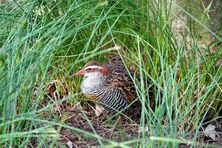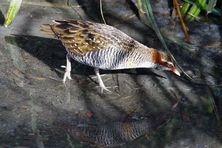
Shoppers Feedback:
Jan 17, 2017
Hello Ros,
I have now paid the invoice, but I would like to write to you just to say a big THANK YOU for getting me the Penguin!
The ChatterMate Penguin became a nice memory for me when I was in New Zealand, and I am so greatful to you for arranging so that I could have it! :-)
Thank you so much!!!!!!!!!!!
Regards,
Malin
Hi Ros,
Many thanks for your very kind email. I really appreciate your prompt reply!
I appreciate your advice regarding the decorations and customs. These are a gift for my daughter’s exchange student family so when she returns home on the weekend I will show her and see if she loves them as much as I do!
Thanks so very much again - I am truly grateful for your kind assistance.
Kind Regards
Bernadette
Ros,
Thanks again for the great customer service. It's a refreshing change!
Best regards,
Trevor
Hey Roz,
Thank you for your emails. Just loved my first order. The cute little Aussie bush critters are going to be used for an office Christmas decoration. My colleagues also liked them and talked about making an order to your site. I'll send you a photo when completed.
I'll be ordering more to send to my daughter's host family in America.
Fabulous service from you.
Kind regards,
Michelle
Thankyou. Order arrived today. One very happy grandson with his new beastly binoculars.
Regards,
Irene
- Home
- Wild Wonders
- Shop
- Aromas of Australia
- Australian Made
- Books
- Book Marks
- Christmas Decoration Sale
- Christmas Decorations
- Clocks
- Drink Holders
- Garden & Outdoor
- Gift Wrapping & Cards
- Home & Giftware
- Jewellery
- Keyrings
- New Products
- Pencils & Pen Holders
- Photo Frames
- Plush Toys
- Plush with Sound
- Sheepskin Rugs
- Stationery
- Stone Carvings
- Toys & Games
- Travel Goods
- Wedding
- Wild Figurines
- Wildlife Safety Products
- Wind Chimes
- Wine Charms
- View All Products
- Wildlife
- Australiana
- Explore
- Contact Us
Buff Banded Rail

Quick Facts
| Length: | 31 cm |
| Height: | - |
| Weight: | 130 grams |
| Colour: | - |
| Habitat: | Dense reeds and vegetation bordering many types of wetlands or crops |
| Food: | Crustaceans, molluscs, insects, seeds, fruit, frogs, carrion and refuse |
| Predators: | - |
| Status: | Secure in all states and territories of Australia |
The Buff-banded Rail is a medium-sized stout rail with short legs. It has a distinctive grey eyebrow and an orange-brown band on its streaked breast. The lores, cheek and hindneck are rich chestnut. The chin and throat are grey, the upperparts streaked brown and the underparts barred black and white. The eye is red. Young birds are much paler to white underneath, with indistinct bars and only a faint orange-brown tint on the breast. Downy chicks are fluffy black. This rail walks slowly, with tail raised and flicking constantly.
The orange-brown breast band distinguishes the Buff-banded Rail from the similar but smaller Lewin's Rail,Dryolimnas pectoralis, which has a rich chestnut crown and nape and a proportionally longer pink bill.
The Buff-banded Rail is widespread in mainland Australia, particularly along the eastern coast and islands, and on Norfolk and Lord Howe Islands.
The Buff-banded Rail is seen singly or in pairs in dense reeds and vegetation bordering many types of wetlands or crops. It makes widespread use of artificial wetlands like sewage ponds and drainage channels.
The Buff-banded Rail is resident and possibly locally nomadic, though little is known of these movements.
The Buff-banded Rail feeds on crustaceans, molluscs, insects, seeds, fruit, frogs, carrion and refuse. It mostly feeds early in the morning and the evening.
Breeding is poorly known, but the Buff-breasted Rail nests in long grass, tussocks, rushes or crops. It makes an unlined cup-shaped nest of grasses or reeds. Both parents incubate and the young will leave the nest within 24 hours. Both parents remain with the young, which usually feed themselves, though the female may feed them as well. Two broods may be raised in some seasons.
Last Updated: Wednesday 17th July, 2013
BUSH e-TELEGRAPH
Signup for our monthly newsletter the "e-Telegraph"
Quick Links
Home | The Beginning | About The Land Down Under | Wild Wonders | Advertise on Wild Wonders | Christmas Decoration Sale | Christmas Tree Decorations | Drink Holders | Plush with Sound | Stone Carvings | Wildlife Wine Charms | Freebies | Australian Wildlife | Help Our Wildlife | Australiana | Photo of the Month | Explore The Land Down Under | Contact Us | Legal Notices


